Considering using the Elegant Themes Bloom plugin to grow your email list? In our Bloom plugin review, we’ll help you decide if this WordPress email plugin is the right option for your site.
In a nutshell, Bloom helps you create email opt-in popups to grow your email list. It’s part of the Elegant Themes membership, which is the same membership that gets you access to the popular Divi theme/plugin.
In general, I think that the Bloom plugin is no longer one of the top options in 2023 and beyond, as it lacks “standard” features such as a visual, drag-and-drop builder and exit-intent popups.
However, it can still work well for basic use cases thanks to its simple template-based approach. So if you’re interested in Elegant Themes for other reasons (e.g. Divi), then you still might be able to get good value from this plugin.
To learn more about where those conclusions come from, keep reading our full hands-on Bloom plugin review.
How Does the Bloom Plugin Work?
Before I get to the pros and cons of the Bloom WordPress plugin, I want to give you a quick rundown on how Bloom works. This will give you some needed context for me discussing what it does well…and what it does poorly.
It will also give you a look at the core features of the plugin.
Here’s how the Bloom WordPress plugin works…
1. Select Your Email Provider (20+ Integrations)
To get started, you’ll want to connect to your email marketing provider.
Currently, Bloom supports 20+ different options. Here they are – in alphabetical order:
- ActiveCampaign
- AWeber
- Campaign Monitor
- Constant Contact
- ConvertKit
- Emma
- Feedblitz
- FluentCRM
- GetResponse
- HubSpot
- iContact
- Infusionsoft
- MadMimi
- Mailchimp
- MailerLite (what we use here at WPKube)
- MailPoet
- Mailster
- Ontraport
- SalesForce
- Sendinblue
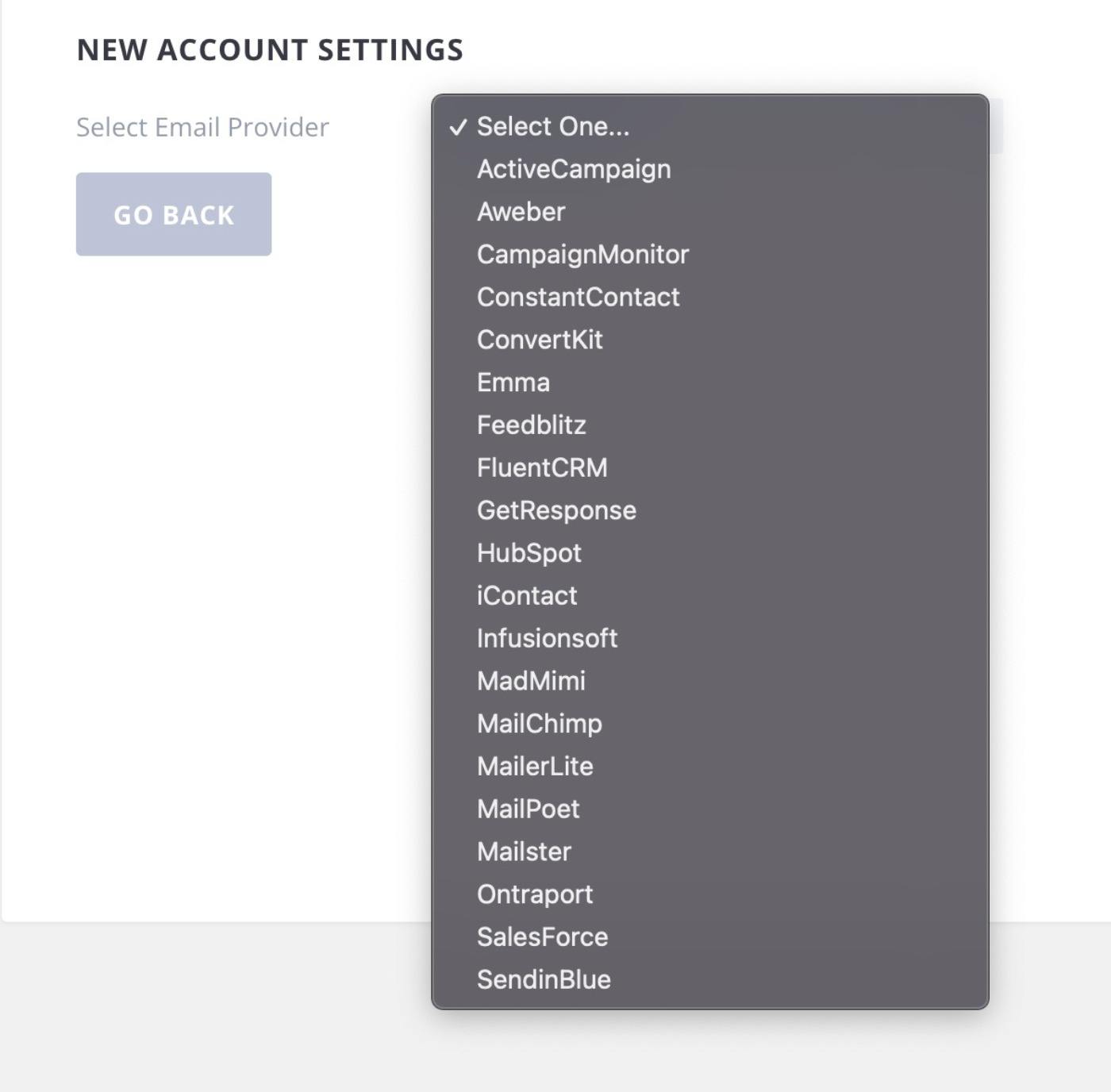
If needed, Bloom lets you connect multiple different email accounts/providers and use different ones on a per-form basis.
2. Create an Opt-In Form (6 Types)
Next, you can create a new opt-in form.
First, you’ll choose the form type from six different options:
- Popup
- Fly-in
- Below post
- Inline
- Locked Content
- Widget
However, it’s missing some essential options like notification bars.
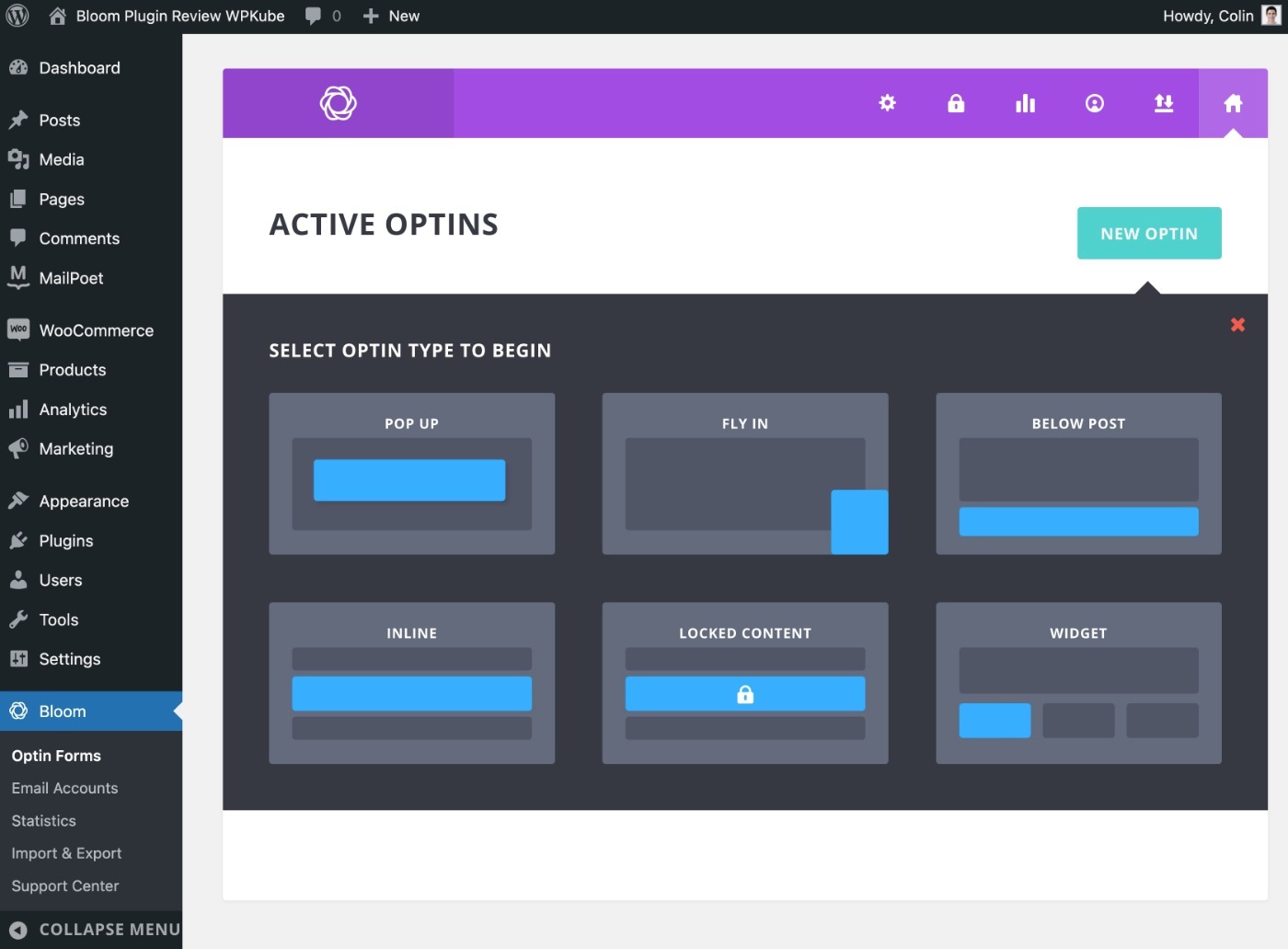
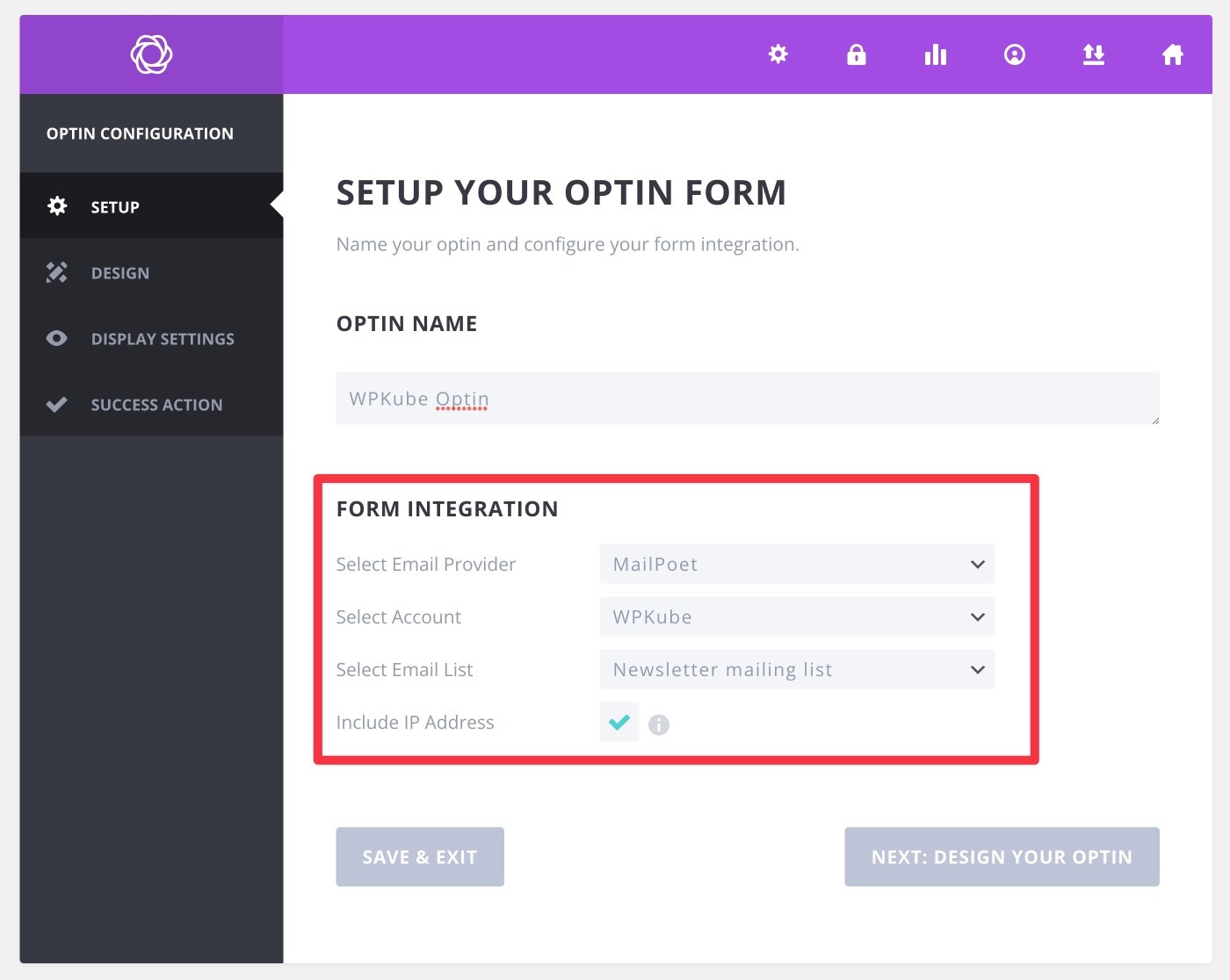
Once you choose the type, you can add a name and choose which email provider to connect it to:
3. Choose a Template
Next, you can choose a template for your form.
This is very important to understand:
You cannot design your own templates using a visual, drag-and-drop builder.
Instead, your only option is to choose a preset template and then customize the text and colors using preset options.
For simple use cases, this might be fine – maybe even preferable because it makes it very easy to use. But if you want full design control, there are better email optin plugins (more on those later).
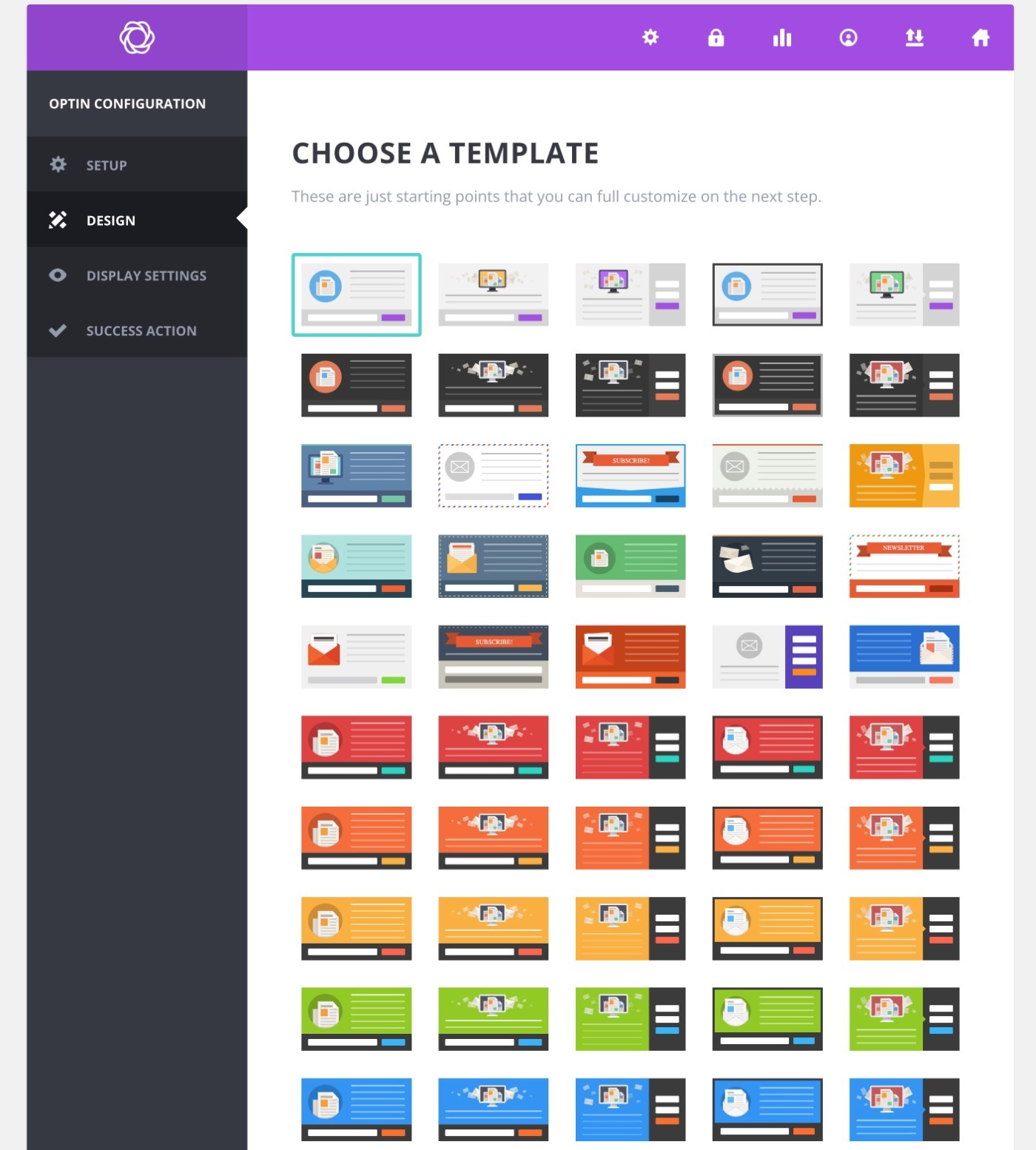
4. Customize Your Template
Once you choose your template, you’ll get a number of preset options.
While I did criticize the lack of a visual builder, you do get a good number of customization options.
First, you can customize the text and image:
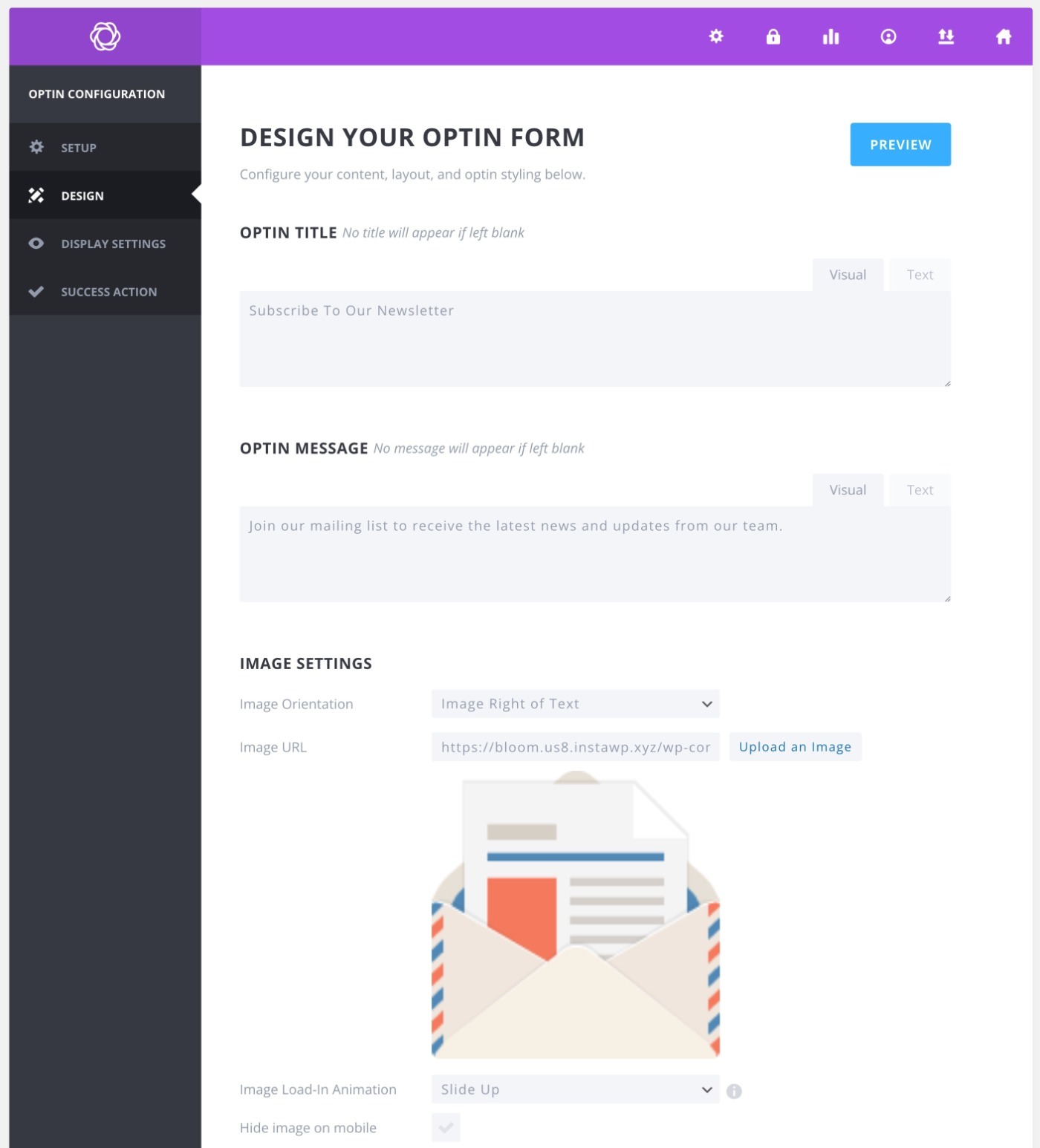
You also get options to customize colors and fonts, as well as some basic layout and border details.
Overall, you do get a decent number of settings. It’s just that there’s no real-time preview and no drag-and-drop, which seems a bit dated when other popular email optin plugins offer those features.
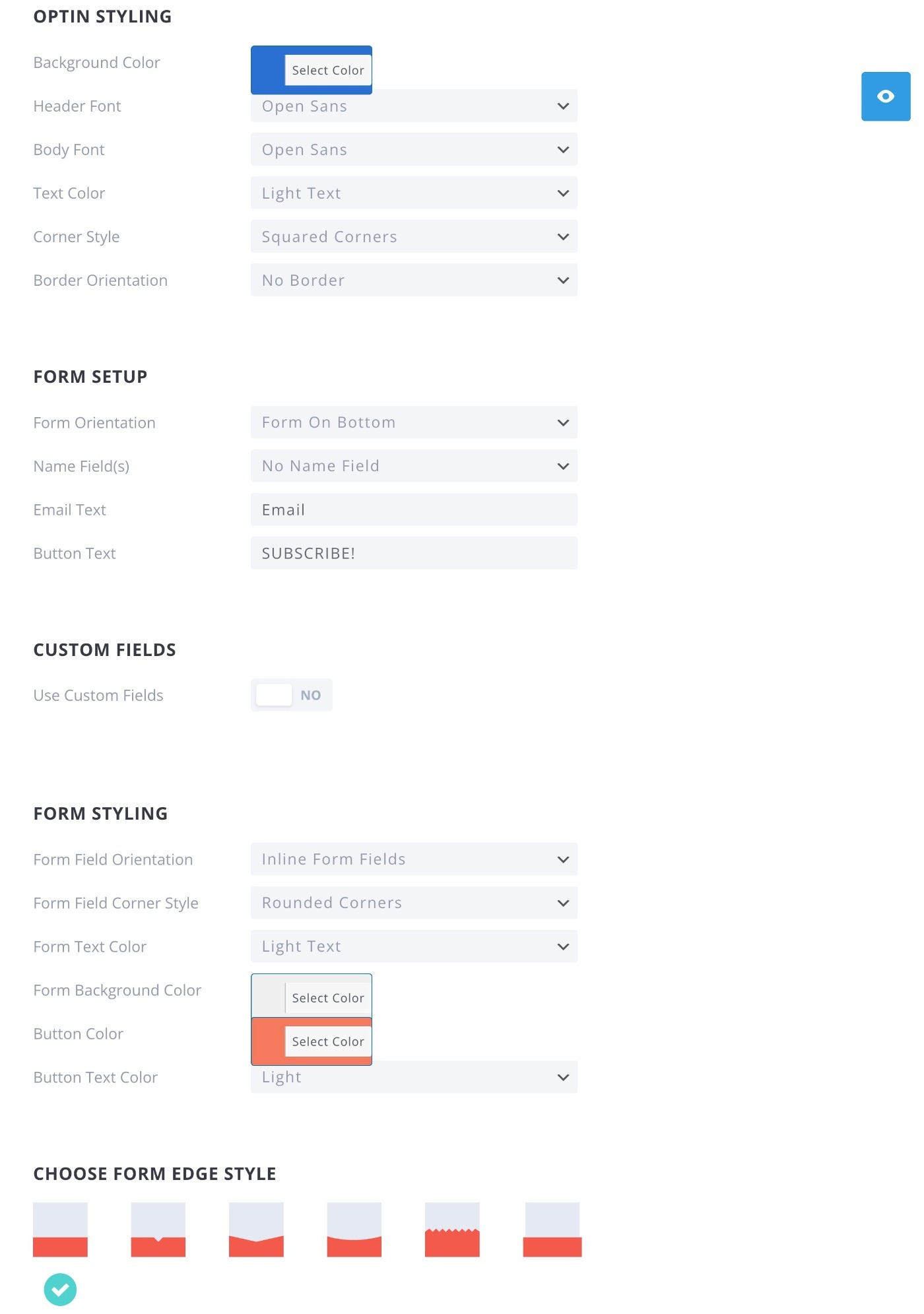
5. Set Display Settings
Next, you can set your display settings, which control two things:
- When to trigger the popup.
- Where to display the popup.
In terms of trigger options, you get all of the standards:
- Time on page
- Inactivity
- Scroll depth
- Click
However, there’s one big omission – no exit-intent targeting.
You do get some unique options to make up for that, though. You can also trigger popups after a user leaves a comment or makes a purchase.
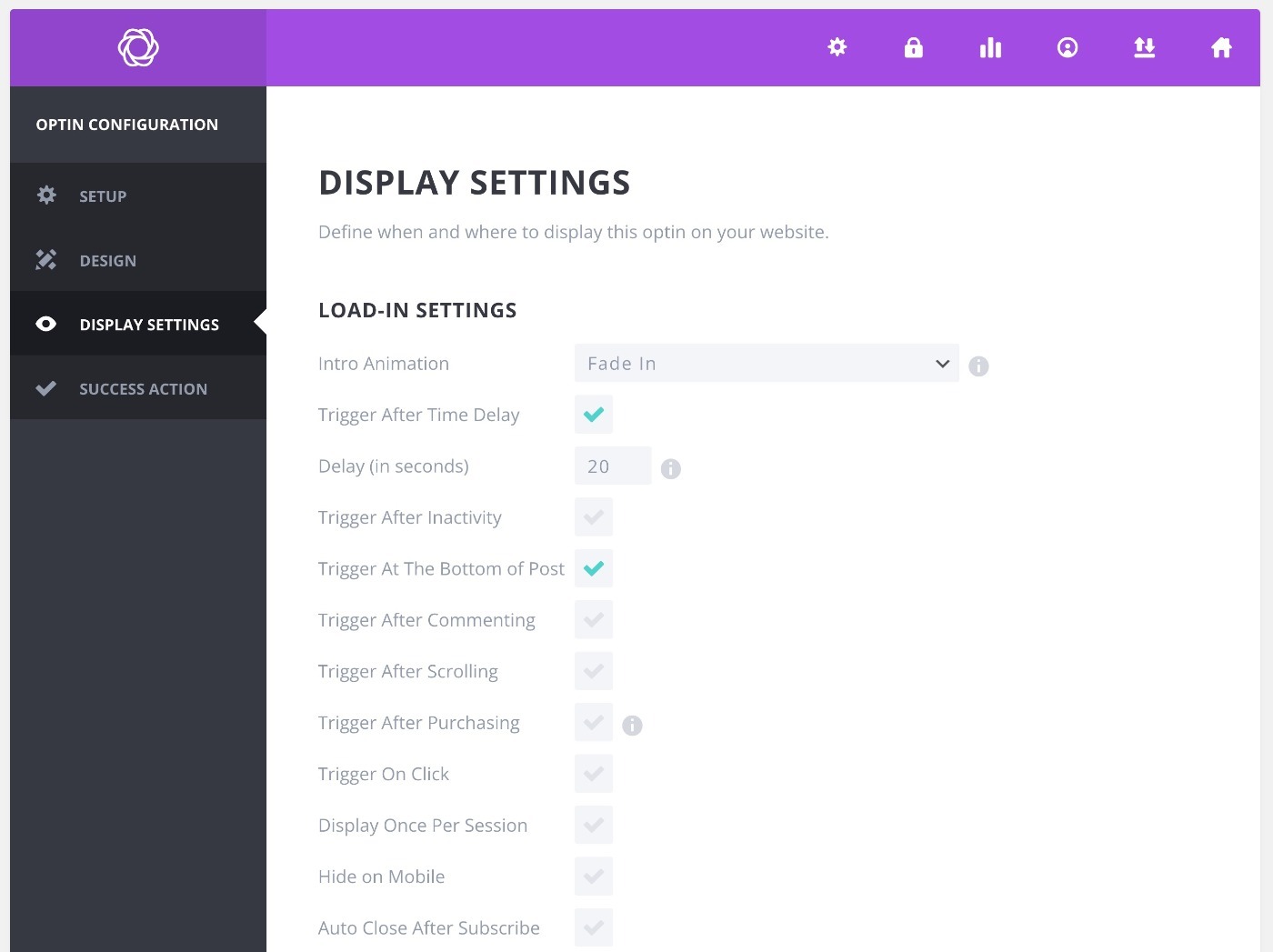
In terms of content targeting, you get a good number of options. You can target by:
- Post type (e.g. blog posts but not pages)
- Categories
- Specific posts or pages
You can also hide on mobile devices if needed, though it would be nice if there were more detailed responsive controls.

6. Set Success Action
Finally, you can choose what happens after a person submits the popup.
You have two options:
- Show a success message
- Redirect to a custom URL
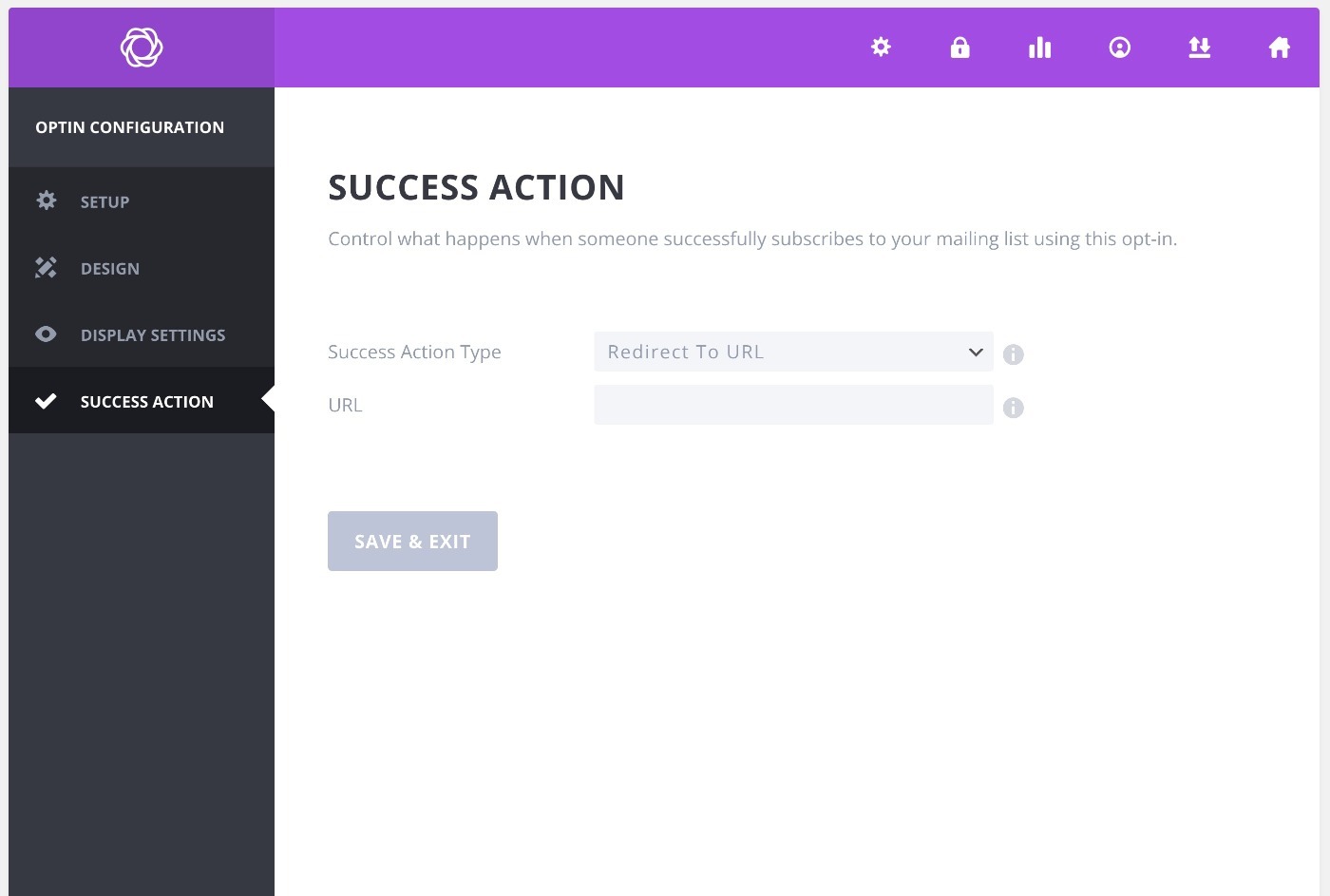
View Stats and Set Up A/B Tests
Once you create a popup, you can view stats in the popup list interface, as well as a dedicated stats dashboard.
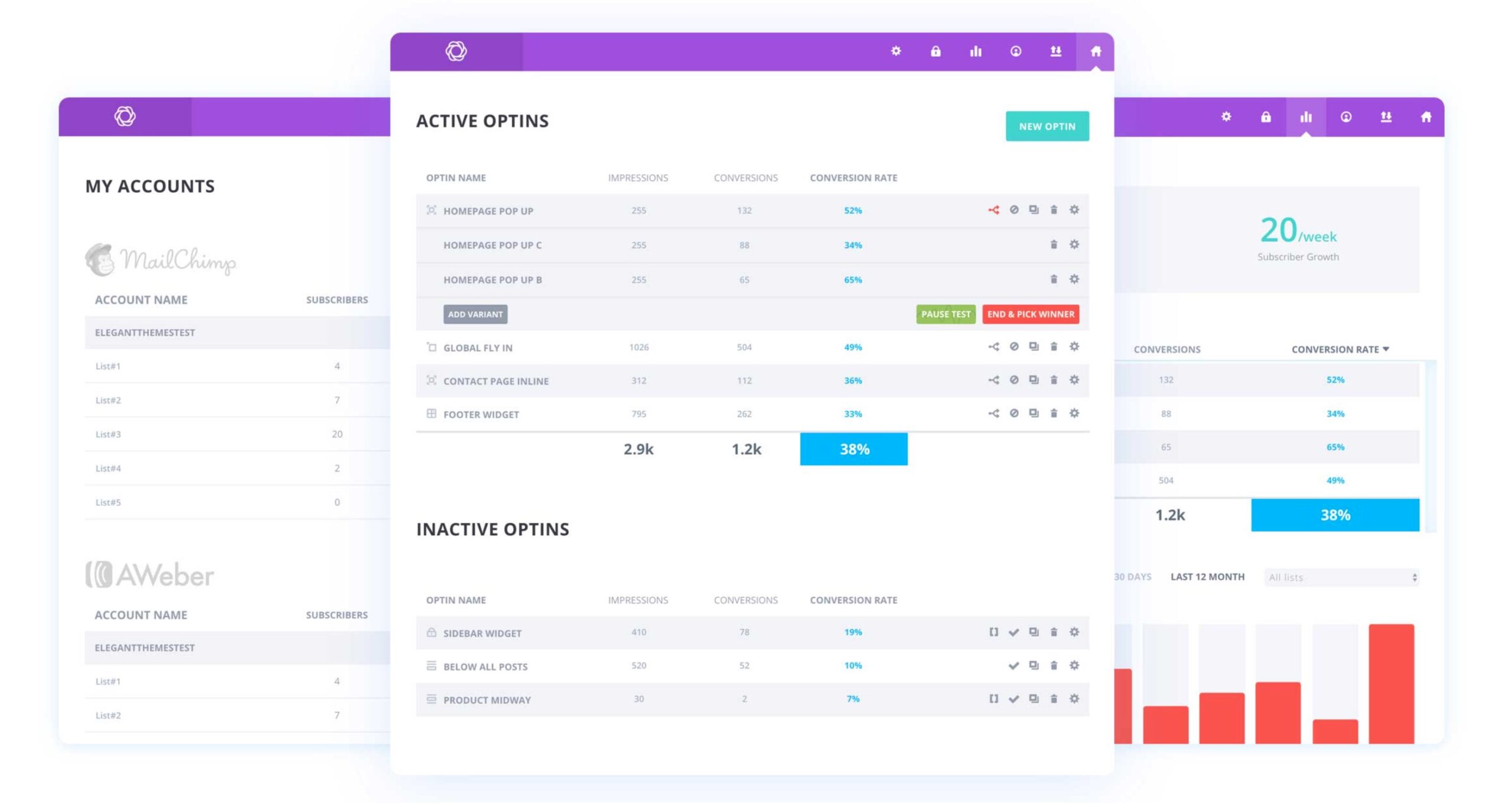
If you want to optimize your popups, you can also set up A/B tests, which lets you test different variants of your popups against one another.
Bloom Plugin Pricing
You cannot purchase just the Bloom plugin. Instead, it’s available as part of the Elegant Themes membership, which gets you access to all of Elegant Themes’ products for one flat price.
This includes the following:
- Bloom
- Divi theme (our review)
- Divi Builder plugin version (our review)
- Extra theme
- Monarch, a social sharing plugin
You can learn more in our full Elegant Themes review.
You can use all of the plugins and themes on unlimited sites.
There are two options to purchase the Elegant Themes membership:
- Yearly license – $89 for one year of support and updates (renewable every year).
- Lifetime license – $249 for lifetime support and updates.
We also have an exclusive Elegant Themes coupon to help you save money.
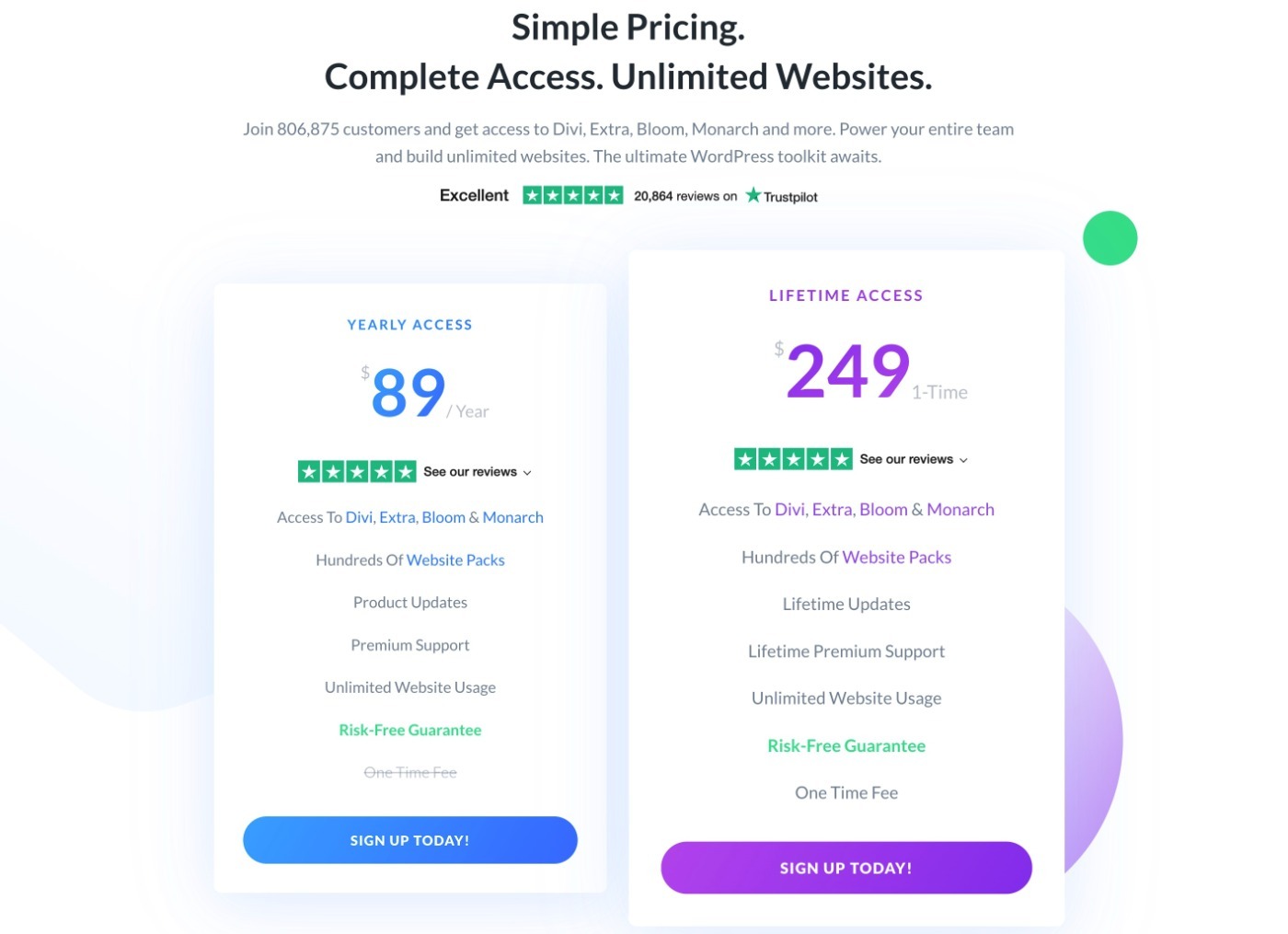
Overall, these plans offer good value if you’re going to use Divi as well. But if you’re only going to use Bloom, you can get more powerful list building plugins for a similar amount of money.
Bloom Plugin Review: Pros and Cons
Pros:
- Simple and easy to use – while you don’t get full design flexibility, the template-based approach does keep things very simple because you just need to add your own content.
- Built-in A/B testing – you can easily run tests to optimize your designs.
- Good value for Divi users – if you’re already an Elegant Themes member because of the Divi theme, the Bloom plugin offers excellent value because you get it at no cost.
Cons:
- No visual, drag-and-drop builder – most other list building plugins now have full visual builders, so Bloom seems dated in this respect.
- Limited template customization in general – you can only customize the options that Bloom gives you when it comes to design.
- Limited popup types – Bloom is missing some popular popup types such as notification bars and fullscreen welcome mats.
- No exit-intent trigger – this is a big drawback to a lot of people.
- Limited integrations – while Bloom supports all the popular options, other plugins have larger lists, which might be important.
The Three Best Bloom Plugin Alternatives
If you’re put off by the limitations of the Bloom plugin, here are some of the best Bloom plugin alternatives.
1. Convert Pro
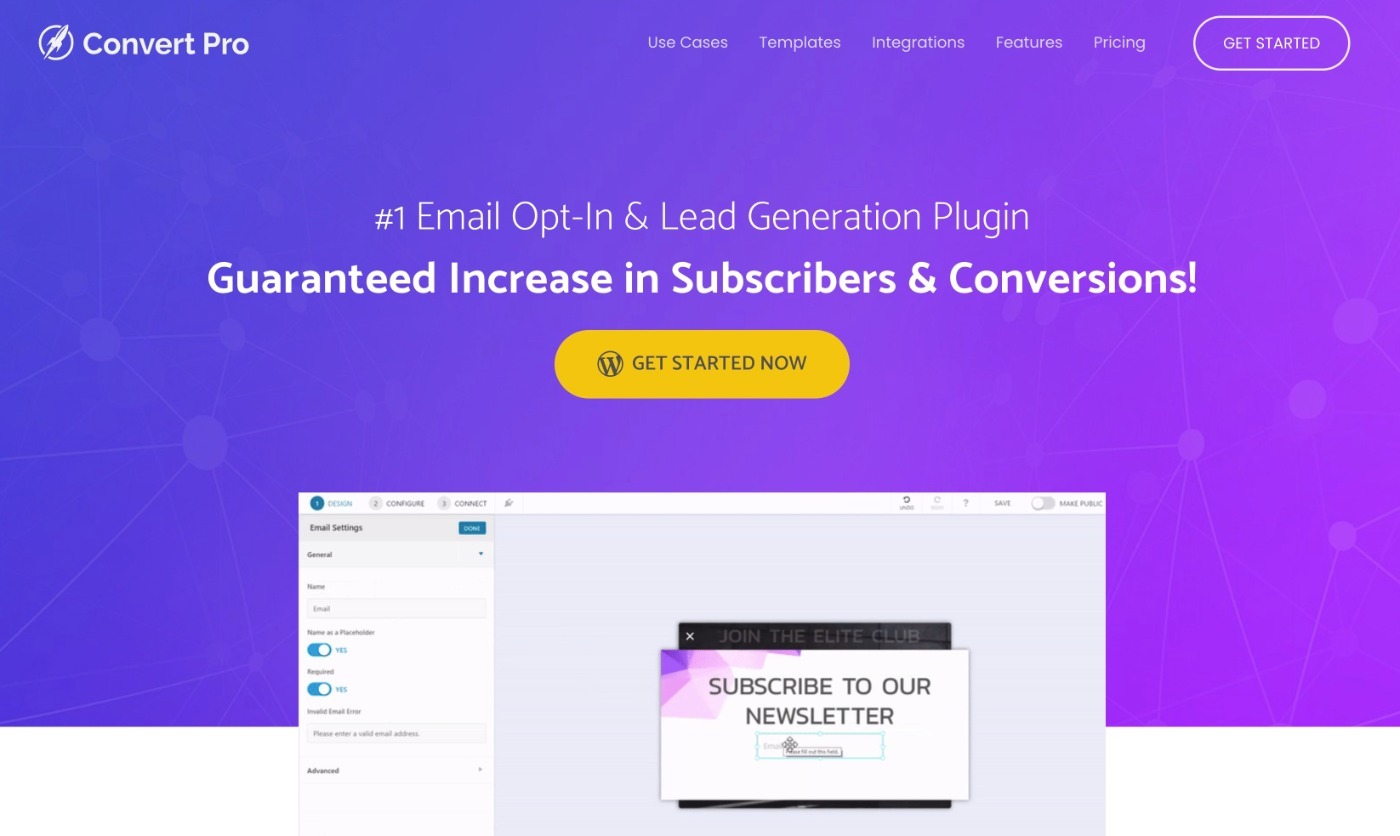
Convert Pro is my personal recommendation for the best WordPress list building plugin for most people.
It packs in a strong feature list at an affordable price. Overall, I think it’s stronger than Bloom in pretty much every area.
Convert Pro costs $99 for use on unlimited sites, which is similar to the Elegant Themes membership price.
You can learn more about it in our Thrive Leads vs Convert Pro comparison post.
Pros:
- Visual, drag-and-drop builder.
- More advanced targeting rules.
- Exit-intent trigger.
- More popup types (e.g. notification bars + welcome mats).
Cons:
- A tiny bit more expensive for a one-year license ($99 vs $89).
- A lot more expensive for a lifetime license ($399 vs $249).
2. Thrive Leads
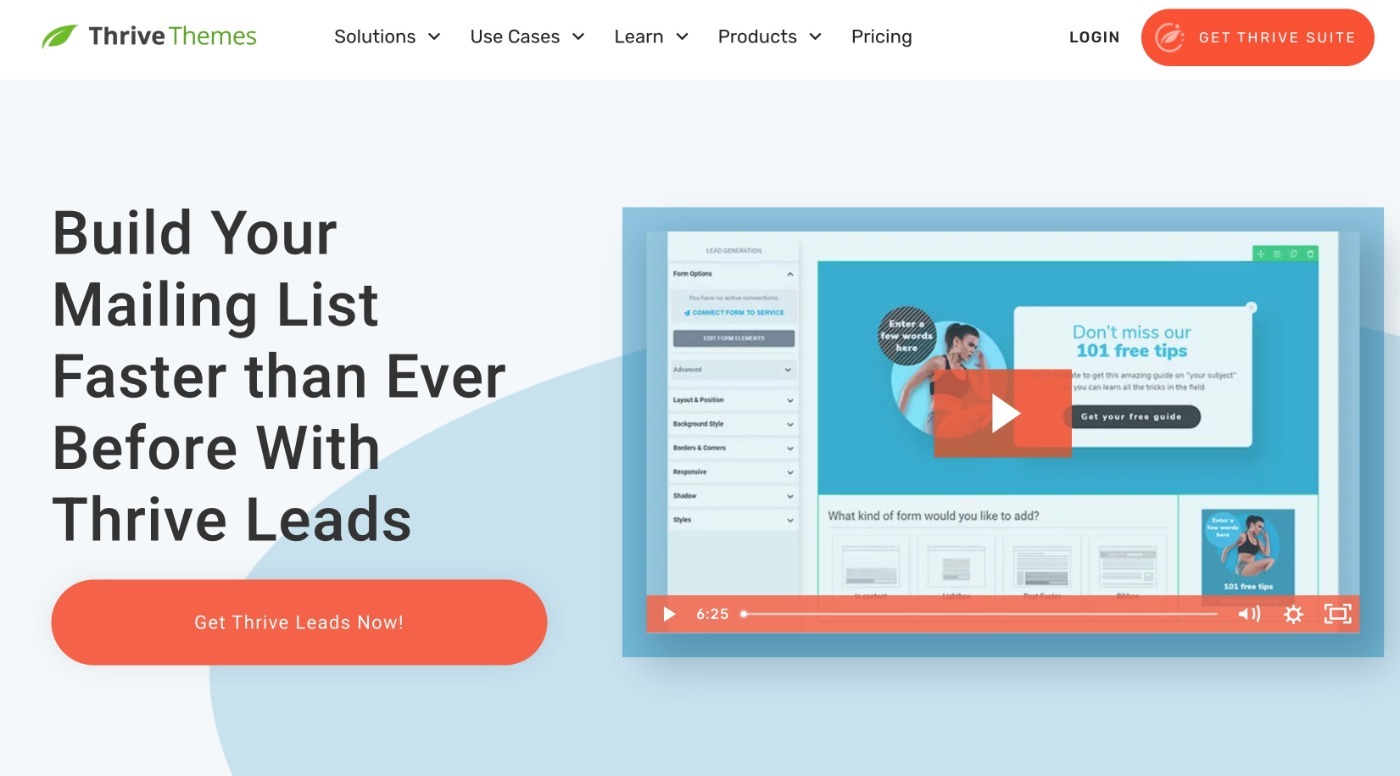
Thrive Leads is another quality option that offers especially good value if you’re interested in the Thrive Themes ecosystem, which includes Thrive Architect (our review), Thrive Theme Builder (our review), and more.
You can learn more about it in our Thrive Leads review.
Pros:
- Visual, drag-and-drop builder.
- More advanced targeting rules.
- Exit-intent trigger.
- More popup types (e.g. notification bars + welcome mats).
Cons:
- More expensive – $97 for just use on a single site.
- No unlimited site license.
- No lifetime pricing option.
3. OptinMonster
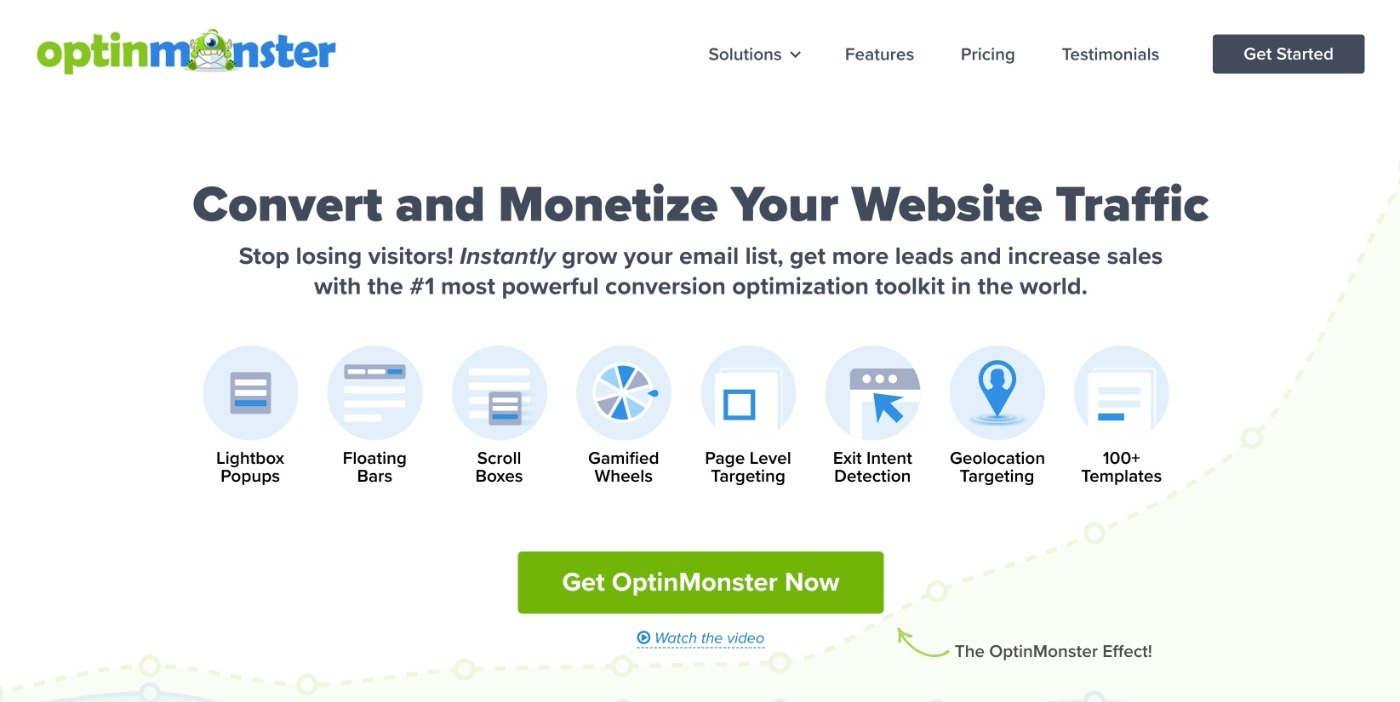
OptinMonster is the best option for heavy-duty marketers who want the absolute most powerful targeting, trigger, and personalization rules.
However, it’s pretty expensive, so I only recommend it if you’re going to take advantage of those advanced features. Otherwise, you’re just wasting money.
You can learn more in our full OptinMonster review.
Pros:
- Visual, drag-and-drop builder.
- Incredibly powerful targeting and personalization rules.
- More advanced trigger options, including exit-intent.
- More popup types (e.g. notification bars + welcome mats).
- Special eCommerce features.
- More integrations with email marketing services.
Cons:
- Way more expensive.
- No unlimited site option.
- No lifetime pricing option.
Elegant Themes Bloom Plugin Review FAQs
To finish out our Bloom plugin review, let’s run over a few common questions.
No – Bloom is available for free to all Elegant Themes members. So if you’re already using Divi, you get Bloom at no extra cost.
No – you can only choose a template and customize its text and colors. You cannot build your own custom designs.
At the time of our Bloom WordPress plugin review, Bloom supports 20 different email marketing services, including both SaaS services as well as native WordPress plugins like MailPoet and Mailster.
Yes – one of Bloom’s strongest benefits is how simple it is to use (though you lose design flexibility).
Yes – Bloom has built-in features for analytics and A/B testing.
Final Thoughts on the Bloom WordPress Plugin
Overall, I would definitely not recommend purchasing an Elegant Themes membership just for the Bloom plugin.
However, if you’re already interested in Elegant Themes because of the Divi theme/plugin, then Bloom can offer solid value since you get it at no extra cost.
You’ll just need to be ok with the main limitations – no visual builder, limited template customization, and no exit-intent.
On the other hand, if you want the “best” email opt-in tool in terms of features, then I recommend using a different plugin:
- Convert Pro is a great all-around option, with a visual builder and much more detailed targeting/trigger rules.
- OptinMonster is the absolute best for advanced targeting rules (especially eCommerce), but it can get pretty expensive.
- Thrive Leads is a solid all-around option, especially if you’re interested in the whole Thrive Themes ecosystem of products. I prefer Convert Pro if you’re not interested in the other Thrive Themes tools, though.
For even more options, you can read our full post with the best list building plugins.









Leave a Reply